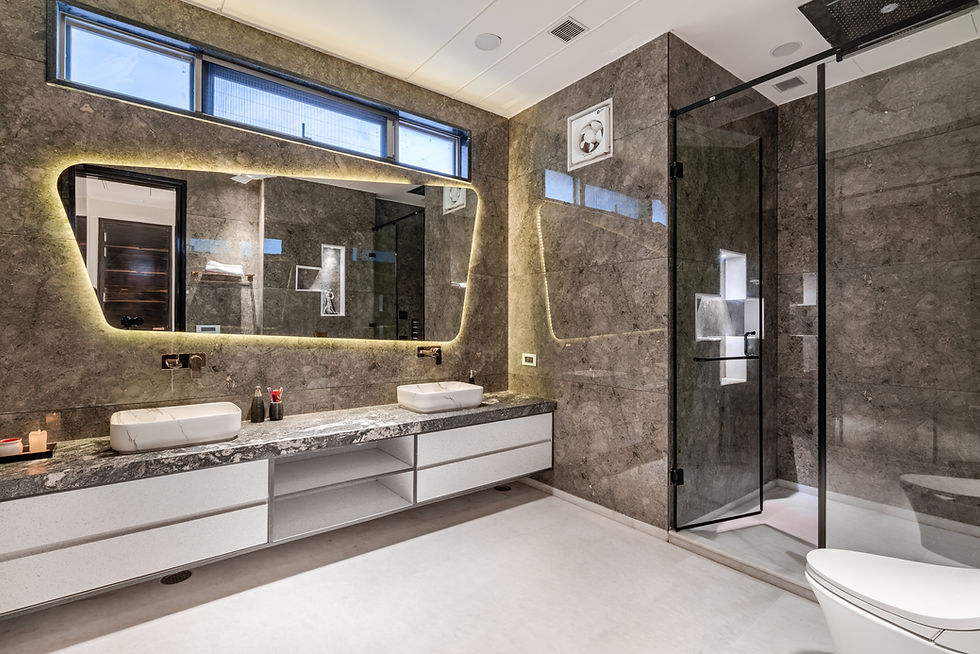
Smart toilets with water-saving features: Revolutionizing Bathroom Efficiency
Share
The world of bathroom technology is undergoing a transformative shift with the advent of smart toilets equipped with water-saving features. These innovative fixtures are not just about luxury; they are pivotal in promoting sustainability and efficiency in our daily lives. For tech professionals and enthusiasts, understanding the nuances of these technologies can provide insights into the future of smart home innovations.
Incorporating water-saving features into smart toilets isn't merely a trendit's a necessity. As global water scarcity becomes a pressing issue, the integration of cutting-edge technology in everyday utilities like toilets offers a sustainable solution that tech-savvy individuals can appreciate and advocate for.

The Evolution of Smart Toilets
Smart toilets have evolved significantly from their initial designs. Early models focused primarily on comfort and hygiene, offering features like heated seats and bidets. However, the latest designs emphasize water conservation without compromising on functionality. These toilets are equipped with sensors and automation systems that optimize water usage by determining the appropriate flush volume for each use.
For instance, dual-flush technology is a hallmark of many smart toilets, allowing users to choose between a full or half flush depending on the waste. This simple yet effective feature drastically reduces water consumption, making it an appealing choice for environmentally-conscious consumers. For more on dual-flush systems, you can explore this [link](https://iottechnologies.io/blogs/our-latest-posts/dual-flush-vs-single-flush-toilets) to understand their efficacy.
Technological Innovations in Water Conservation
The integration of IoT (Internet of Things) in smart toilets has brought about revolutionary changes in water-saving techniques. These toilets often include sensors that detect user presence and adjust water flow accordingly. Furthermore, some models can analyze usage patterns and suggest optimal settings for water conservation.
Advanced water management systems are also part of the smart toilet ecosystem. These systems monitor real-time water usage and identify leaks or inefficiencies, thereby preventing unnecessary wastage. For a deeper dive into how IoT is transforming plumbing systems, refer to this insightful [article](https://iottechnologies.io/blogs/our-latest-posts/smart-plumbing-systems).
Eco-Friendly Materials and Design
Beyond technology, the design and materials used in smart toilets play a crucial role in their water-saving capabilities. Many manufacturers are now using eco-friendly materials that reduce the overall environmental impact of production. Additionally, the sleek and efficient design of these toilets ensures minimal water usage while maintaining optimal performance.
The importance of eco-friendly design is paramount in the push towards sustainable living. By choosing toilets made from sustainable materials, consumers not only support the environment but also encourage manufacturers to continue innovating in this space.
Adoption and Impact on Society
The adoption of smart toilets with water-saving features is steadily increasing, thanks to growing environmental awareness and technological advancements. These toilets are particularly popular in regions facing acute water shortages, where every drop counts. By reducing household water consumption, smart toilets contribute significantly to global water conservation efforts.
Moreover, as more tech enthusiasts and professionals advocate for these innovations, the societal impact becomes more pronounced. Education and awareness are key to increasing adoption rates. For tips on how to effectively conserve water in residential settings, this [guide](https://woodlandswater.org/water-saving-tips-residential-water-use/) provides practical advice.
For those considering a switch to water-saving toilets, understanding the cost-benefit analysis is crucial. While initial investments may be higher than traditional toilets, the long-term savings on water bills and the environmental benefits are substantial.
Conclusion
The future of bathroom technology lies in the seamless integration of efficiency and sustainability. Smart toilets with water-saving features not only exemplify this integration but also set the standard for future innovations. For tech professionals and enthusiasts, embracing these changes is not just about adopting new technologyit's about leading by example in the quest for a sustainable future.
For more insights on the best water-saving toilets for various bathroom sizes, check out this [resource](https://iottechnologies.io/blogs/our-latest-posts/best-water-saving-toilet-for-small-bathrooms).

FAQ
What are the key benefits of smart toilets with water-saving features?
Smart toilets with water-saving features offer numerous benefits, including reduced water consumption, automated functions for convenience, and enhanced hygiene. They also contribute to environmental conservation efforts by minimizing water wastage.
How do smart toilets detect the appropriate amount of water to use?
Many smart toilets are equipped with sensors that detect user presence and determine the necessary flush volume. Some models can analyze usage patterns and adjust settings to optimize water usage.
Are smart toilets with water-saving features cost-effective?
While the initial investment in smart toilets may be higher, the long-term savings on water bills and the positive environmental impact make them a cost-effective choice in the long run.
This article contains affiliate links. We may earn a commission at no extra cost to you.
